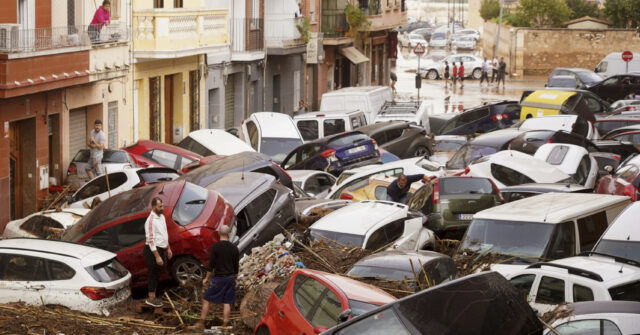On October 31, 2024, survivors of one of Spain’s worst natural disasters faced a grim reality as flash floods struck the Valencia region, claiming at least 95 lives. A rising death toll was anticipated as rescue workers continued to locate bodies in the wreckage of vehicles and amidst the sprawling mud-strewn landscape. Transport Minister Óscar Puente reported that search efforts turned grim, with deceased individuals discovered inside some of the countless cars stranded by the torrential waters. The flooding’s devastation resembled that of a hurricane or tsunami, with Barrio de la Torre and its surrounding areas now characterized by wreckage, from smashed vehicles piled upon each other to uprooted trees and downed infrastructure, capturing the sheer terror residents experienced as walls of rushing water transformed peaceful neighborhoods into life-threatening conditions.
The aftermath showcased the harsh reality faced by the local populace, with thousands left without basic utilities like water and electricity. Hope for fundamental services seemed distant as recovery operations faced obstacles, with many roads impassable and train connections to Madrid disrupted. This chaotic scene was not only confined to Valencia; neighboring regions, including Castilla-La Mancha and Andalucía, reported fatalities and significant damage as heavy winds and rains wreaked havoc across vast stretches of the Iberian Peninsula. The calamity also placed agricultural activities in jeopardy, with fields and greenhouses—the backbone of Spain’s agriculture—left devastated, exemplifying the broader economic impact of the disaster.
As the immediate danger subsided, attention shifted toward the inadequacies in the emergency response. The weather service recorded unprecedented rainfall that caught officials off-guard, highlighting gaps in disaster preparedness. The Valencian regional government faced criticism for delayed warnings sent by mobile alerts that arrived after the onset of flooding, creating questions about whether timely interventions could have mitigated some of the disaster’s worst outcomes. Accounts of individuals like Mari Carmen Pérez revealed that many residents had already been caught in the torrent when alerts were finally issued, raising serious concerns regarding the efficacy of communication protocols during emergencies.
The emotional toll on survivors, such as Christian Viena, a local bar owner, and Andreu Salom, the mayor of L’Alcudia, became evident as they grappled with the loss of lives within their communities. Villagers mourned the deaths of friends and family while simultaneously confronting the colossal task of rebuilding their lives amidst such devastation. Local leaders expressed their frustration over the lack of timely disaster warnings, leaving residents vulnerable as the floods descended without proper preparation or awareness. As search and rescue operations continued, the tangible presence of recovery units became a sobering reminder of the human cost permeating through the chaos.
Amidst the wreckage, Spanish Prime Minister Pedro Sánchez planned a visit to assess the destruction firsthand. This visit came on the heels of the announcement of a three-day official mourning period as the nation collectively recognized the loss and the devastation inflicted primarily on Valencia and its neighboring municipalities. Government officials mobilized thousands of soldiers to aid in recovery efforts, recognizing the immediate need for manpower as local responders gradually addressed the overwhelming challenges presented by the disaster. Still, skepticism resounded in the public discourse about whether existing emergency protocols were sufficient.
As recovery efforts unfolded, it was critical to highlight the broader implications of climate change in Spain’s increasingly extreme weather patterns. The recent disaster triggered a national discourse about the urgency for enhanced infrastructure and proactive measures to prepare for future catastrophes anticipated to be exacerbated by climate-related threats. Experts warned that these severe weather events would likely only become more frequent unless substantial steps were taken to adapt to a changing climate. This disaster underlined the necessity of improved warning systems and response strategies that prioritize the safety and well-being of vulnerable populations across the country. The fate of Barrio de la Torre and other affected areas served as poignant reminders of the ongoing battle against nature’s futility and the pressing responsibility of authorities to safeguard their communities.

